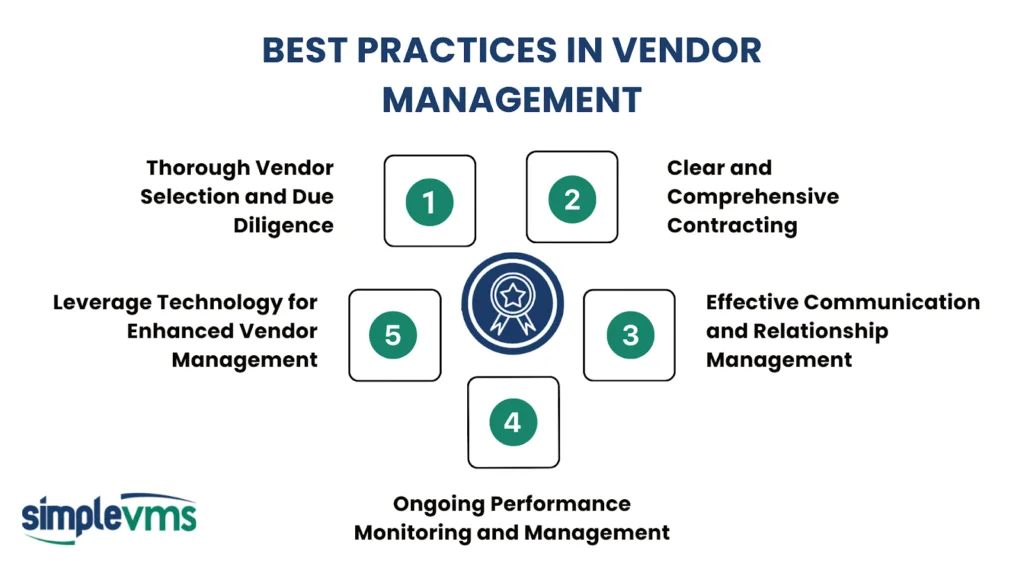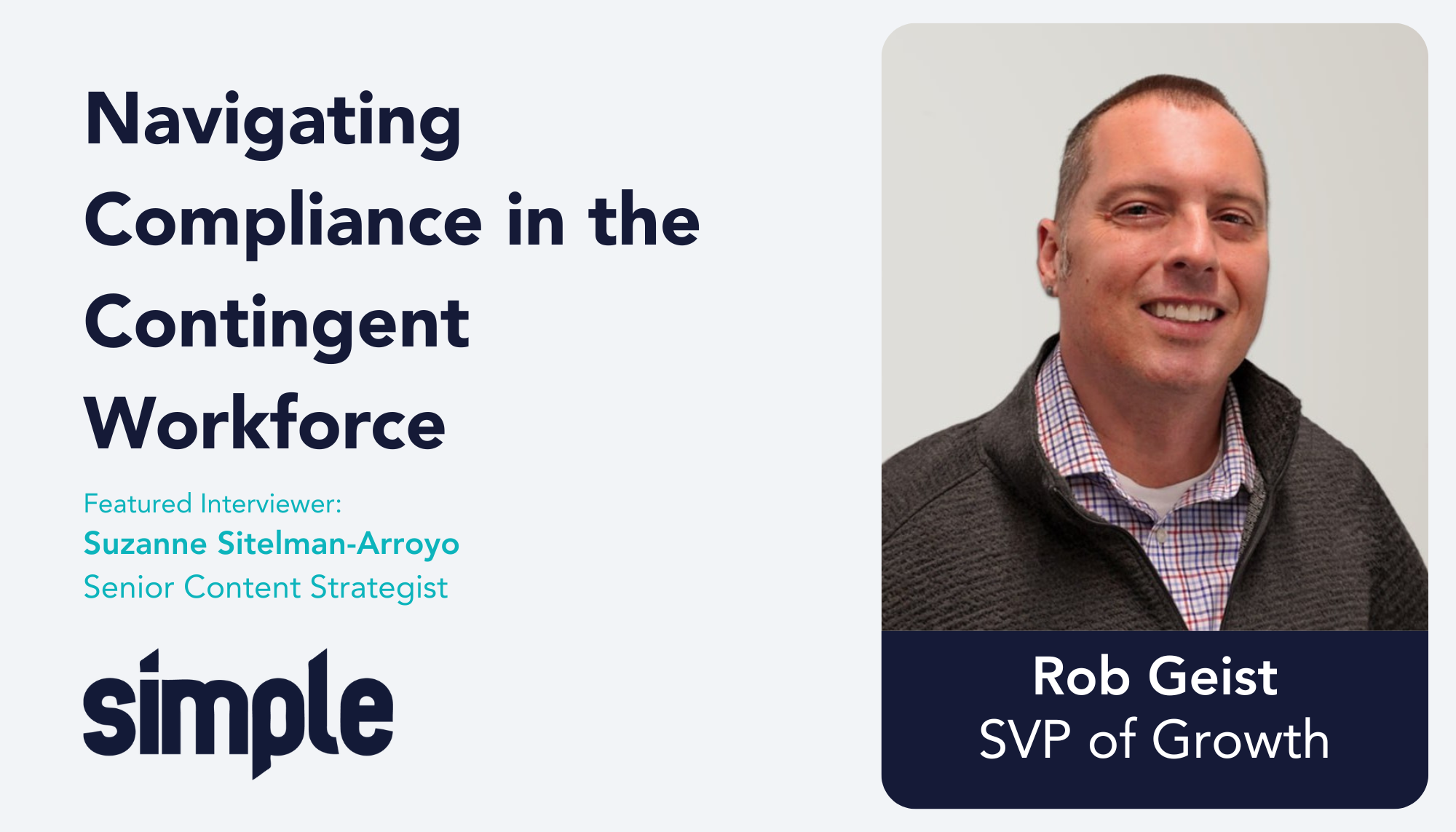5 Best Practices in Vendor Management


Vendor relationship management is a critical aspect of modern business operations that involves overseeing and coordinating relationships with external suppliers who provide goods and services to a company. This process is not only crucial for ensuring that operations run smoothly and efficiently but also plays a pivotal role in reducing costs, enhancing service quality, and ensuring compliance with regulatory standards.
Effective third-party vendor management can transform a company’s operational capabilities, making it more agile and competitive in today’s fast-paced market environment. By integrating robust vendor management practices into daily business processes, companies can achieve optimal results—ensuring they receive the best value from their partnerships.
This comprehensive guide will walk you through the best practices in vendor management, helping you harness the full potential of your vendor relationships. Whether you are looking to streamline your procurement process, optimize your contingent workforce, enhance supplier performance, or ensure compliance and risk management, these practices will provide a comprehensive framework to achieve these objectives efficiently.

The process of selecting the right vendors is critical for sustaining business growth and stability. It starts with a rigorous evaluation of potential vendors to ensure their capabilities align with your strategic goals. Focus on their technical proficiency, candidate capacity, and ability to adapt to changes, which are crucial for long-term collaboration.
Conduct comprehensive due diligence to assess the financial stability, market reputation, and vendor compliance with industry regulations. This step is vital to identify any potential risks that could impact your business operations or reputation.
Finally, implement strategic risk management by analyzing the operational, financial, and reputational risks associated with each vendor. Ensure that they have effective strategies in place to mitigate these risks. This thorough vetting process not only protects your business from potential threats but also builds a foundation for strong, mutually beneficial vendor relationships.
Clear and comprehensive contracts are the backbone of strong relationships. They serve as a legal framework that outlines the responsibilities, expectations, and obligations of both parties, ensuring that all aspects of the partnership are transparent and enforceable.
It’s vital to draft detailed contracts that clearly define the scope of work, deliverables, pricing models, and timelines. Specificity in contractual obligations helps prevent misunderstandings and sets clear expectations for both parties. This includes outlining processes for scope changes, which are common in long-term partnerships.
Service-Level Agreements (SLAs) are critical components of vendor contracts. They specify the performance standards expected from the vendor and the metrics by which their performance will be measured. SLAs also establish penalties for compliance issues, which reinforces accountability. By defining these parameters, companies can ensure consistent service quality and reliability.
While it’s important to have detailed contracts, they should also offer flexibility to adapt to changing business needs. Contracts should include provisions for scaling services up or down based on demand, as well as clauses that allow for contract negotiation or early termination under agreed-upon circumstances. This flexibility is crucial for maintaining a resilient and responsive supply chain.
By emphasizing the necessity of clear, detailed contracts with well-defined SLAs, companies can better manage their vendor relationships, boosting overall performance, minimizing risk, and furthering alignment of business objectives. This approach not only protects the company legally but also strengthens the partnership by setting a foundation of trust and mutual understanding.

Effective communication is crucial in managing vendor relationships successfully. It ensures that both parties are consistently aligned on expectations, project statuses, and strategic goals. This alignment helps prevent misunderstandings and fosters a collaborative environment.
Scheduling meetings on a regular basis keep each party well-informed and responsive. This ongoing dialogue allows for quick resolution of issues and adjustments in strategies or expectations as necessary.
Moreover, building a partnership rather than maintaining a purely transactional relationship can lead to significantly better outcomes and innovation. When vendors are treated as strategic partners, they are more likely to invest deeply in understanding your business objectives and contribute creatively to your projects. This collaborative approach not only improves service quality but also encourages mutual growth and innovation.
To ensure that vendor relationships deliver continuous value, it’s essential to implement ongoing performance monitoring and management. This involves regularly assessing vendor performance against established key performance indicators (KPIs) and metrics to ensure they meet or exceed the agreed-upon standards.
Regular performance reviews help identify areas where vendors are performing well and areas that may need improvement. This data-driven approach allows for timely interventions and adjustments, ensuring that vendor services evolve in line with your business needs and market dynamics.
Additionally, utilizing vendor management software can streamline the monitoring process. These tools offer automated tracking and reporting features, making it easier to manage multiple vendor relationships efficiently and effectively. By continuously monitoring performance, you can make informed decisions about contract renewals, renegotiations, or even terminations, fostering a culture of accountability and continuous improvement.
Utilizing technology, specifically through advanced vendor management systems like SimpleVMS, can revolutionize how businesses manage their vendor relationships. SimpleVMS is designed to streamline and simplify every aspect of vendor management, offering features like automated tracking, real-time reporting, and integrated compliance tracking.
With SimpleVMS, companies in a variety of industries can automate routine tasks such as job postings, interview scheduling, onboarding, and invoicing. This automation reduces manual workload, enhances accuracy, and ensures compliance with regulatory requirements. Additionally, the platform’s real-time reporting capabilities provide instant access to critical data, allowing for proactive decision-making and quick issue resolution.
Incorporating these best practices in vendor management can significantly enhance your business operations. By integrating these strategies, you ensure better vendor performance, reduced risks, and stronger relationships.
SimpleVMS offers innovative solutions that encapsulate these best practices into one seamless platform. Its features streamline vendor management processes, enhance efficiency, and provide real-time insights, making it an invaluable tool for any business. Implementing SimpleVMS can lead to more efficient, effective vendor management, driving your business toward greater success and sustainability.
To learn more about how SimpleVMS can benefit your vendor management processes, schedule a no-obligation demo.
Related Resources


